Switzerland: Jungfraujoch Part 2 - The Jungfrau Railway
Feb 17, 2021 14:57:25 #
The Jungfrau Railway (German: Jungfraubahn, JB) is a 1,000 mm (3 ft 3 3⁄8 in) metre gauge rack railway which runs 9 kilometres (5.6 mi) from Kleine Scheidegg to the highest railway station in Europe at Jungfraujoch (3,454 m (11,332 ft)), between the Bernese Oberland and the Upper Valais in Switzerland. The railway runs almost entirely within the Jungfrau Tunnel, built into the Eiger and Mönch mountains and containing two stations in the middle of the tunnel, where passengers can disembark to observe the neighbouring mountains through windows built into the mountainside. The initial open-air section culminates at Eigergletscher (2,320 m), which makes it the second highest open-air railway in Switzerland. The line is electrified at 3-phase 1,125 volts 50 Hertz, and is one of four lines in the world using three-phase electric power.
The Jungfraubahn got its name from the highest of the three majestic peaks above it: Jungfrau (English: maiden, virgin; 4,089 metres (13,415 ft))
At Kleine Scheidegg the JB connects with the Wengernalpbahn (WAB), which has two routes down the mountain, running respectively to the villages of Lauterbrunnen and Grindelwald. From both villages, branches of the Berner Oberland-Bahn (BOB) connect to the Swiss Federal Railways at Interlaken.
The line is owned by the Jungfraubahn AG, a subsidiary of the Jungfraubahn Holding AG, a holding company that also owns the Wengernalpbahn, Bergbahn Lauterbrunnen–Mürren, Harderbahn, and Firstbahn. Through that holding company it is part of the Allianz - Jungfrau Top of Europe marketing alliance, which also includes the separately owned Berner Oberland-Bahn and Schynige Platte-Bahn.
Since most of the railway is inside a tunnel, it was designed to run with electricity from conception. The latest rolling stock consists of twin-unit motorcoaches carrying up to 230 people per train which operate at 12.5 km/h on the steepest parts of the ascent. The motors function at two speeds which allows the units to operate at double this speed on the less steep part of the ascent (above Eismeer station).
The motors will operate in a regenerative mode which allows the trains to generate electricity during the descent, which is fed back into the power distribution system. Approximately 50% of the energy required for an ascent is recovered during the descent. It is this generation that regulates the descent speed.
Motive power delivered since 1992 no longer has directly fed three phase motors but is equipped similarly to a normal single phase locomotive. This rolling stock can travel at variable speed which allowed to cut journey time from 52 to 35 min with the timetable starting 11 December 2016. Pre-1992 rolling stock can no longer be used in regular traffic and most of the earlier trains have been scrapped.
Snow clearing equipment is essential on the open section of line between Kleine Scheidegg railway station and Eigergletscher railway station. Originally snow ploughs were used but more recently snow blowing equipment has been brought into service.
The railway also operates some dedicated freight vehicles to supply the visitor facilities at Jungfraujoch, including a tank to transport additional water.
https://en.wikipedia.org/wiki/Jungfrau_Railway
We boarded the bright red Jungfraubahn train in Kleine Schiedegg for the ride up the mountain which will be the subject of my next few sets. Fortunately the windows of the cars slid open from the top so I was able to capture these images of the magnificent scenery without worrying about glare. These were all taken with a Nikon D7200 and a Nikkor 18-300 lens in AP at f8 with shutter speeds varying between 1/320 to 1/1000 sec. Please try the downloads. I hope you enjoy them.
Mark
The Jungfraubahn got its name from the highest of the three majestic peaks above it: Jungfrau (English: maiden, virgin; 4,089 metres (13,415 ft))
At Kleine Scheidegg the JB connects with the Wengernalpbahn (WAB), which has two routes down the mountain, running respectively to the villages of Lauterbrunnen and Grindelwald. From both villages, branches of the Berner Oberland-Bahn (BOB) connect to the Swiss Federal Railways at Interlaken.
The line is owned by the Jungfraubahn AG, a subsidiary of the Jungfraubahn Holding AG, a holding company that also owns the Wengernalpbahn, Bergbahn Lauterbrunnen–Mürren, Harderbahn, and Firstbahn. Through that holding company it is part of the Allianz - Jungfrau Top of Europe marketing alliance, which also includes the separately owned Berner Oberland-Bahn and Schynige Platte-Bahn.
Since most of the railway is inside a tunnel, it was designed to run with electricity from conception. The latest rolling stock consists of twin-unit motorcoaches carrying up to 230 people per train which operate at 12.5 km/h on the steepest parts of the ascent. The motors function at two speeds which allows the units to operate at double this speed on the less steep part of the ascent (above Eismeer station).
The motors will operate in a regenerative mode which allows the trains to generate electricity during the descent, which is fed back into the power distribution system. Approximately 50% of the energy required for an ascent is recovered during the descent. It is this generation that regulates the descent speed.
Motive power delivered since 1992 no longer has directly fed three phase motors but is equipped similarly to a normal single phase locomotive. This rolling stock can travel at variable speed which allowed to cut journey time from 52 to 35 min with the timetable starting 11 December 2016. Pre-1992 rolling stock can no longer be used in regular traffic and most of the earlier trains have been scrapped.
Snow clearing equipment is essential on the open section of line between Kleine Scheidegg railway station and Eigergletscher railway station. Originally snow ploughs were used but more recently snow blowing equipment has been brought into service.
The railway also operates some dedicated freight vehicles to supply the visitor facilities at Jungfraujoch, including a tank to transport additional water.
https://en.wikipedia.org/wiki/Jungfrau_Railway
We boarded the bright red Jungfraubahn train in Kleine Schiedegg for the ride up the mountain which will be the subject of my next few sets. Fortunately the windows of the cars slid open from the top so I was able to capture these images of the magnificent scenery without worrying about glare. These were all taken with a Nikon D7200 and a Nikkor 18-300 lens in AP at f8 with shutter speeds varying between 1/320 to 1/1000 sec. Please try the downloads. I hope you enjoy them.
Mark
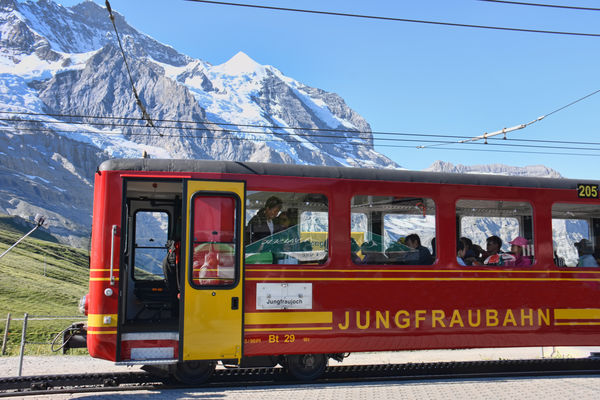
(Download)
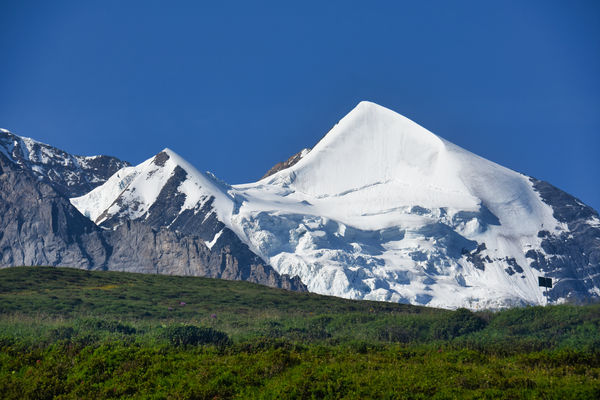
(Download)
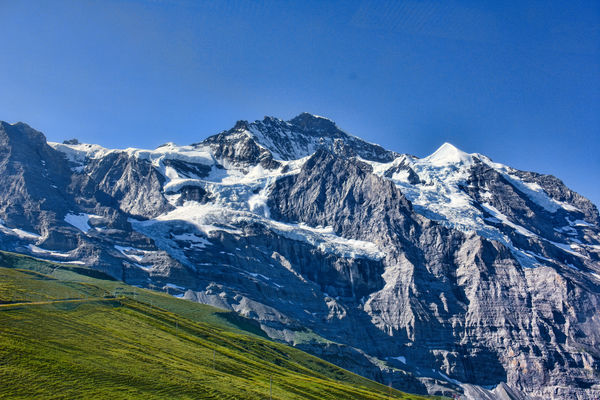
(Download)
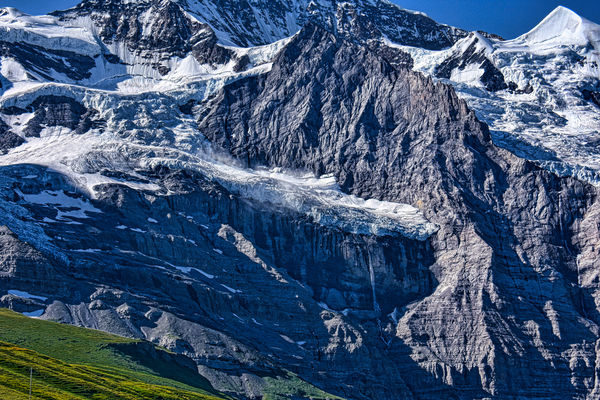
(Download)
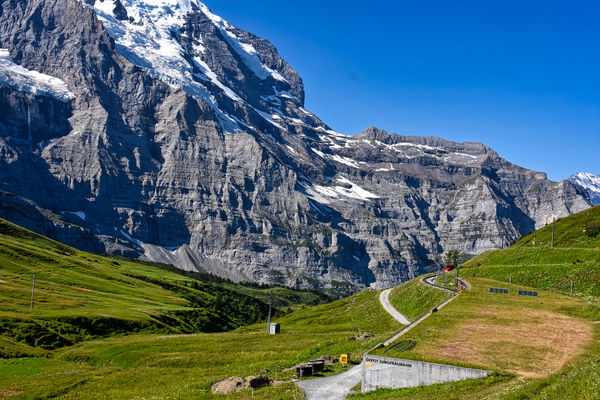
(Download)
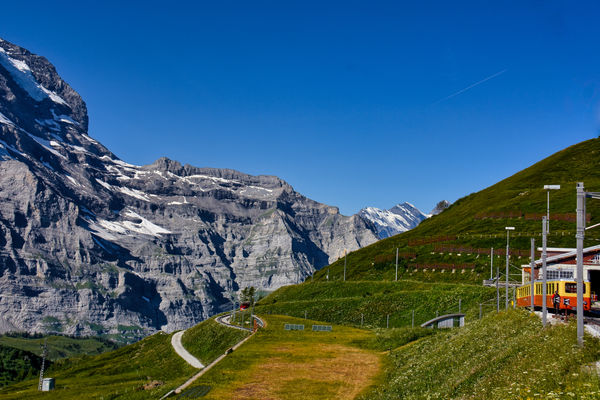
(Download)
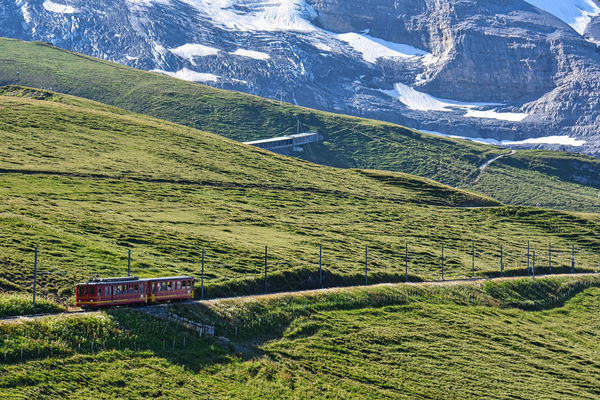
(Download)
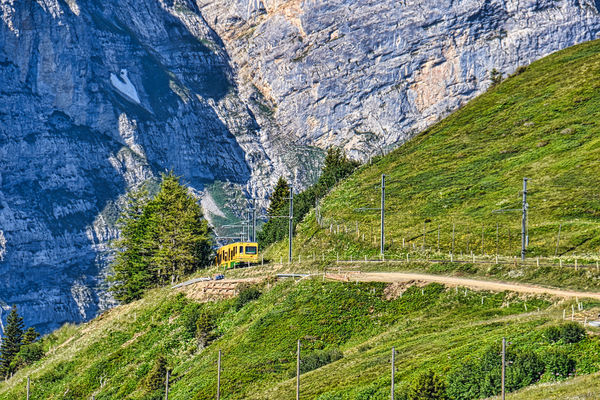
(Download)
One of the brightly decorated snowplows
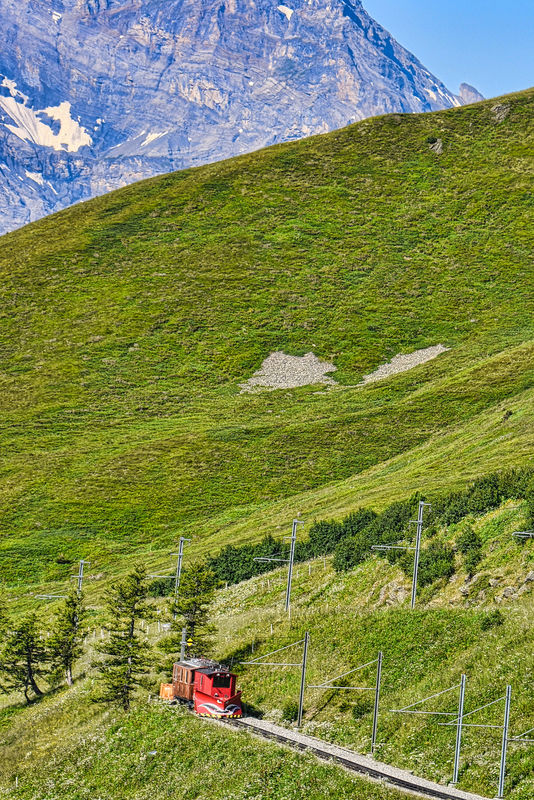
(Download)
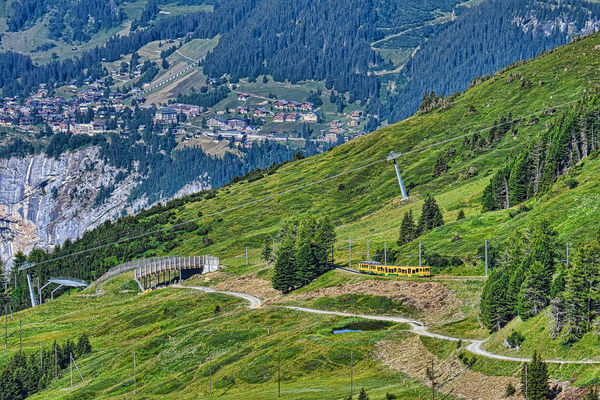
(Download)
Feb 17, 2021 15:13:11 #
Feb 17, 2021 15:16:37 #
srfmhg wrote:
The Jungfrau Railway (German: Jungfraubahn, JB) is... (show quote)
Mark, Thanks for the great info on The Jungfrau Railway and your accomplished images. They are super. Thanks again for sharing.Stan
PS As a second career you would make a great travel agent. I would be one of your first customers
Feb 17, 2021 16:41:07 #
Excellent tour, Mark! I love seeing it without snow. Did you ever go up the Zugspitse in Germany via the rail road?
Feb 17, 2021 16:46:04 #
srfmhg wrote:
The Jungfrau Railway (German: Jungfraubahn, JB) is... (show quote)
Such impressive, magnificent dream landscapes and spectacular shots



Feb 17, 2021 17:52:02 #
Feb 17, 2021 19:53:39 #
Feb 17, 2021 19:55:17 #
PixelStan77 wrote:
Mark, Thanks for the great info on The Jungfrau Railway and your accomplished images. They are super. Thanks again for sharing.Stan
PS As a second career you would make a great travel agent. I would be one of your first customers
PS As a second career you would make a great travel agent. I would be one of your first customers
Thanks so much Stan. I appreciate your kind words. I'd much prefer leading virtual tours and I love retirement!
Feb 17, 2021 19:57:01 #
UTMike wrote:
Excellent tour, Mark! I love seeing it without snow. Did you ever go up the Zugspitse in Germany via the rail road?
Thanks Mike. Glad you are enjoying it. We've not been to Germany yet but look forward to it if we can travel again.
Feb 17, 2021 19:57:41 #
joecichjr wrote:
Such impressive, magnificent dream landscapes and spectacular shots 





Thanks so much Joe. I really appreciate the compliments.
Feb 17, 2021 19:58:07 #
kpmac wrote:
Beautiful country and very nicely taken images of it, Mark.
Thanks very much Ken.
Feb 17, 2021 23:17:57 #
srfmhg wrote:
The Jungfrau Railway (German: Jungfraubahn, JB) is... (show quote)
Beautiful scenery, well photographed. Excellent set Mark.
Feb 18, 2021 02:28:48 #
DJphoto wrote:
Beautiful scenery, well photographed. Excellent set Mark.
Thanks so much Dennis. I always appreciate your kind comments.
Feb 18, 2021 08:09:16 #
Feb 18, 2021 08:24:55 #
Very nicely done, Mark. The downloads are beautiful. I especially love this set because I have an LGB model electric train that is the exact model and colors of the passenger cars in image 1 & 7, except for the Jungfraubahn on the side.
If you want to reply, then register here. Registration is free and your account is created instantly, so you can post right away.







